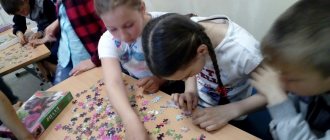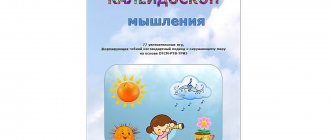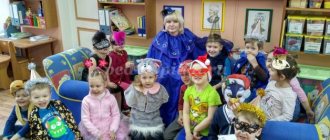How to get your child interested in drawing
Absolutely all children, learning about the world around them, do this through the act of creativity. The psyche of a baby from birth is like a blank slate, but personality and temperament are already innate. Therefore, parents need to try to understand the individuality of their child and contribute as much as possible to the disclosure of his inner potential without unnecessary pressure and neglect.
On a note! To do this, it is not at all necessary to compete with each other in the number of developmental activities, courses and clubs, but to provide the child with space and material for creativity as early as possible, studying with him.
Where to begin:
- Starting from six to seven months, when the baby has already begun to sit confidently, you can give him an album and finger paints, soft wax crayons, modeling dough, and so on. Water coloring pages are also suitable.
- Bright, but not acidic colors and ease of use will immediately attract the little creator for at least a few minutes, or maybe even an hour. This will be enough for daily activities; they also contribute to the development of concentration and perseverance. In addition to special techniques with various cards and bags, each mother can independently find a lot of ways to expand the boundaries of perception and encourage her baby to be creative with the help of available tools, helping and supporting. Co-creation is the basis for closer, trusting relationships in the future.
- Creator's Kit. The simultaneous perception of color and shape, the skills of holding a pencil or brush in your hand, drawing, sculpting - all this creates new neural connections, and regular repetitions strengthen them.
- It is ideal to interest a child by personal example, when one of the parents, an older brother or sister draws.
- Collective creativity that develops drawing in children in kindergarten.
- However, if a child shows no interest in drawing at all, but prefers more active actions, then there is no need to force him, it will only have the opposite effect. Such children should be periodically offered drawing unobtrusively.
Conditions and means
Important! All creative materials for children under three years of age should be as safe and non-toxic as possible. They need to be bought in special stores from responsible manufacturers, or made with your own hands from food products (flour, water, salt, fruit juices, etc. There are a lot of recipes on the Internet!)
Such classes are held at home in a comfortable environment under the supervision of adults. During teething, you can exclude them, or use special products that relieve itching of the gums so that the child does not eat paints and crayons.
What does fine art give and develop in a preschooler?
At the age of three, there is a leap in brain development, as well as the autonomy of the little person’s consciousness from his parents. During this period, it is very important to promote independence and creativity. At the same time, a crisis at the age of three is possible, when a child rebels and protests against literally everything. Engaging in creative activities will help you get through this period easier. And in the future it contributes to the formation of a comprehensively developed personality.
Examples of literary leisure in secondary groups of kindergartens
Individual approach and team work with children
Each child is instilled with the ability to feel a balance between collective activities with a teacher and the manifestation of their own individuality. The whole group receives a given topic, but everyone completes this task in their own way.
Conducting GCD on drawing on a chosen topic
- A selection of demonstration materials for the conversation (photos and drawings) form the basis of the visual aid for the lesson. Such pictures should be selected taking into account the age of the children. The image should be clear, three-dimensional, moderately bright, understandable for children, and not difficult to reproduce.
- Music and poetry appropriate to the topic of the lesson will help create a favorable background and creative atmosphere. They are also selected taking into account age characteristics. The positive influence of classical instrumental music, such as Bach or Beethoven, has been proven. Thematic children's songs about the depicted object are also perfect for a subject image.
- The lesson notes on drawing in the chosen technique for different age groups are prepared by the teacher in advance.
How to teach a child attentiveness and perseverance at 7 years old
| Age group | Subject | Method and technique | Materials |
| 2-3 years, junior group | Apple | Dot drawing with a cotton swab. | Watercolor or gouache, cotton swabs, thick paper or cardboard with the outline of an apple. A jar of water, 3/4 full. |
| 3-4 years old, second youngest group. | Blooming spring tree | Graphics with colored pencils. | Set of colored pencils: pink, green, brown. Paper or cardboard. |
| 4-5 years old, middle group. | Autumn kindergarten. | Watercolor | A set of watercolor paints 10-12 colors, paper or cardboard, 2-3 small or medium sized squirrel brushes, a jar of water. |
| 5-6 years old, preparatory group | Undersea world | Application. Using stencils, drawings are drawn onto paper with a simple pencil, then they are cut out and pasted onto a background sheet. | Base - turquoise colored cardboard, PVA glue, hard glue brush, glass of water, a set of colored paper or cardboard of different colors, scissors, stencils (clams, shells, starfish, fish, octopuses, etc.), a simple pencil . |
Preparing for a drawing lesson in kindergarten
It is carried out by a teacher or educator, and from the age of five - together with children. Drawing in kindergarten is a full-fledged lesson in collective creativity.
On a note! Properly organized, collective classes also develop discipline and accuracy in children.
Algorithm of actions:
- Select a topic. For example, seasons (spring, summer, autumn, winter) or still life.
- Choose drawing techniques and techniques in kindergarten.
- Choose one of the types of traditional and non-traditional drawing in a preschool educational institution.
- According to the topic, you need to select a nature and a sample drawing.
- Prepare sheets of paper or their alternative, 5-10 pieces for each child. Sign the first and first letter of the last name in the upper left corner on the reverse side.
- Preparing watercolor or gouache - mix each color a little with water.
- Sharpening pencils.
- Immediately before class, you need to pour water into sippy cups.
Fine arts classes at preschool educational institutions
Types of traditional and non-traditional drawing for preschoolers in Preschool Educational Institutions
Traditional drawing techniques include:
- drawing with a simple pencil,
- colored pencils,
- felt-tip pens,
- gouache,
- using a stencil,
- wax crayons.
Today you can find or invent an endless variety of unconventional drawing techniques, their originality and attractiveness lie in unexpected ways of using a wide variety of materials.
Non-traditional techniques:
- Finger painting. To do this, use special finger paints or regular gouache.
- They also use gouache to paint with palms. To do this, you need large-format paper; it is possible to create a general picture with a whole group of children, or decoratively decorate the walls of the kindergarten.
- Creating a picture from colored or colorless sand.
- Intuitive drawing for children is another way to learn fine arts. In this case, the child is invited to choose or come up with a theme and drawing technique, offering him a choice of various materials.
Handouts needed for the lesson.
- Base: Whatman paper, cardboard, canvas, wooden planks.
- Materials: watercolor, gouache, soft plasticine, glitter, pencils, pens and felt-tip pens.
- Additionally: brushes (cotton swabs), erasers, palettes, cotton pads, scissors and glue for applique, etc.
Unconventional techniques






